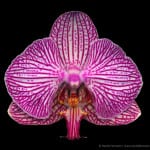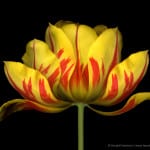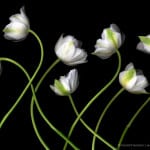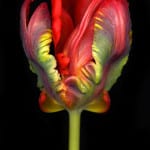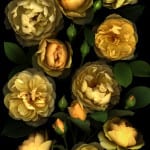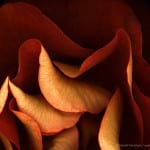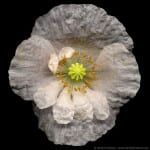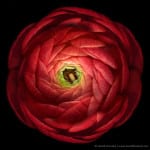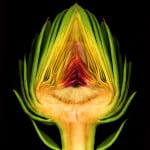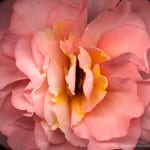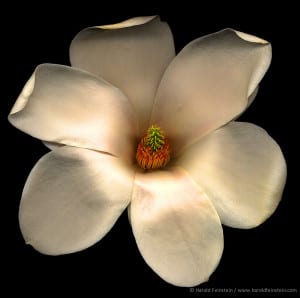
From the Facebook page of Harold Feinstein, June 22, 2015
It is with the deepest sadness that we announce the death of Harold Feinstein in his home on Saturday, June 20, 2015 at the age of 84. His loving wife, Judith Thompson, was with him at his passing.
Harold took great delight in the new audiences attracted to his work in recent years through an award-winning book, several prominent exhibitions and work on two documentaries about his life.
He lived every day with gratitude for life and brought great joy to those who knew him personally and through the appreciation of his art. There will never be another one like him, and he will be sorely missed.
Harold Feinstein: Free spirit, innovator and inspirer
“When your mouth drops open, click the shutter…”
This has been Harold Feinstein’s defining message for almost 70 years. Yet at a recent two person show with the posthumous photography phenomenon, Vivian Maier, admiring visitors to Atlanta’s Lumiere Gallery kept asking: “Why haven’t I ever heard of this guy?”
Why, indeed? When he was only 19, Edward Steichen, the famed photography curator at the Museum of Modern Art purchased his photographs, making him the youngest person to be so honored. In his mid-twenties, the New York Times and major photography publications were using the words “master” and “a perfected language” to describe his work. In an article about Feinstein’s work, former New York Times photo-critic A.D. Coleman has called Feinstein “one of the most seriously under recognized senior figures in U.S. photography.”
Thankfully that is changing. The attention his work received as a young man is returning. Feinstein would smile when he heard this. After seven decades of prolific artistic output he’s quite content. “The complaint department is closed. The secret to a great life? Do the work you love and live with someone you love. What could be better?” Happily Feinstein had scored big on both!
From the mid-40s to the turn of the century, Feinstein, who was born in Coney Island, was known primarily as a legendary teacher and a small camera black-and-white photographer, though he did venture into color from time to time. Before he was 30, he had served in the army during the Korean War, lived in New York’s now-famous Jazz Loft where Charlie Parker, Thelonius Monk and Coltrane would have all night jam sessions, become a designer for Blue Note records, developed a strong collaboration and friendship with W. Eugene Smith, shown his work at the legendary Limelight Gallery, the Museum of Modern Art, the George Eastman House and the Whitney Museum, and was widely published and sought after by the photo magazines of the day. He had also set a record for an exhibition print sale when 50 people bought prints at an opening of his work in 1957. Jacob Deschin, the photo writer for the New York Times called his work “the new pictorialism, the refinement of the craft as a technically perfected language, not as an end in itself…but as the eloquent vehicle of an individual’s need to say something worthwhile in pictures.” In 1957 at the age of 26, as his star continued to rise, he moved away from the city to begin raising his small family in a $40 a month farmhouse in New Jersey. He spent the next 20 years teaching in various locations and institutions on the east coast.
In addition to his six-decade love affair with Coney Island, Feinstein’s early black-and-white work included traditional street photography, nudes, portraits, still life, and a series from his sojourn as a draftee in the army. As an iconoclast and innovator, he began early on to explore different ways to express his vision. In the 50s he began creating elaborate photomontages, which he would continue to do throughout his career, and in the 80s he placed a small prism on his camera lens to produce gorgeous abstract color cityscapes. But his biggest innovation was yet to come.
Embracing the Digital Age: A New Direction Blooms
The biggest innovation in Feinstein’s work began in the late 90s when he took out a loan and purchased high-end computer equipment and software so that he could begin to manifest some new ways to “pay homage” to his love of life. His wife, Judith, was aghast at the price tag and skeptical about the project. She has since confessed that there is generally a method to his madness.
Feinstein, who calls himself a slow-learn with technology, waited for the right moment, when a young digital printer wanted to barter photography lessons for Photoshop lessons. Once he got the hang of it, Feinstein’s imagination exploded. A year later he had his first book contract for One Hundred Flowers with Little Brown, which is now in its third printing. The next year he had six exhibitions, multiple magazine articles and book reviews. Oprah showcased the work in six magazines and two of her books. In fact, his image “Robin’s Roses” (1999) adorns the cover of her book Words that Matter (William Morrow, 2010). Six more color books would follow over the next eight years, plus a proliferation of licensing and product development, which landed in his lap with no effort.
In 2011, The Griffin Museum for Photography gave him The Living Legend Award and currently two documentaries are in production. A recent retrospective in Moscow co-sponsored by Harper’s Bazaar followed by the current show in Atlanta have added to his renewed visibility. With more exhibitions scheduled for the fall of 2015 and next year, the pubic will continue to see more of his work.
Even with Harold’s passing the work continues: the completion of the documentaries, a traveling exhibition, and more on the horizon. Harold believed ”The most important word in the creative process is ‘yes’ – even before you know where it will lead you.” So it has been with Feinstein’s life and career, and we’re all the beneficiaries. He would often joke with his beloved wife Judith, “Dying might be my best career move”.
NYTime – Obit http://www.nytimes.com/2015/06/30/arts/harold-feinstein-dies-at-84-froze-new-york-moments-in-black-and-white.html
Daily Telegraph – London – Obit -http://www.telegraph.co.uk/news/obituaries/11746914/Harold-Feinstein-photographer-obituary.html
Lumiere Artist Page — http://lumieregallery.net/wp/11501/harold-feinstein/
Lumiere Artist Page — One Hundred Flowers http://lumieregallery.net/wp/12301/harold-feinstein-flowers/
Harold’s Web page — http://www.haroldfeinstein.com
Harold’s Facebook page for condolences and comments for Judith — https://www.facebook.com/HaroldFeinstein
Harold’s Blog — http://www.haroldfeinstein.com/blog/ Mary Ellen Mark remembrance – less than a month before his own death
Tony Casadonte
Lumière offers one of the country’s largest selections of collectable photographic prints. Tony Casadonte has had a diverse, thirty five year career in photography. After graduation from Rochester Institute of Technology, his early career concentrated on photo-illustration, video, computer graphics and management of commercial photographic laboratory operations.


